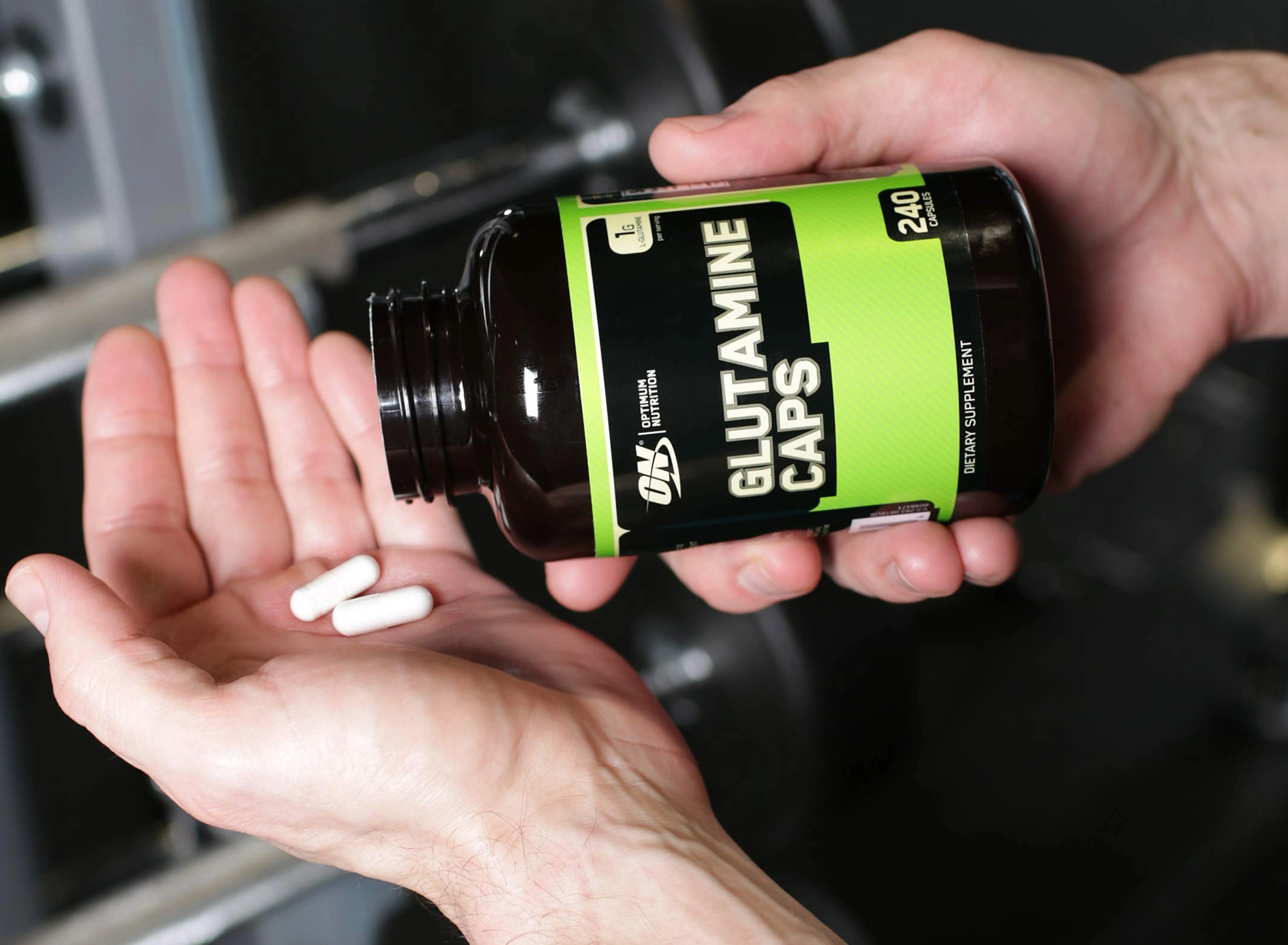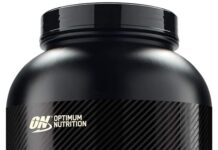When it comes to gaining muscle, everything your local gym bro told you is right. Ok, that’s not entirely true, but a position paper from the International Universities Strength and Conditioning Association (IUSCA), published in the International Journal of Strength and Conditioning, states that a handful of tried-and-and true practices may be the right way to approach hypertrophy training. Here are mass-building recommendations published in the International Journal of Strength and Conditioning.
The main takeaways? Each week, you need to hit each muscle with at least 10 intense sets, taken to near-failure. You should work in the six to 12 rep range most often. It’s important to work the muscle from various angles and rest between one to two minutes per set. Oh, and frequency — meaning how often you train — is less important than the total volume. (1)
The position paper was authored by a team of eight “leading experts in the field,” including Associate Professor of Exercise at Lehman College Brad Schoenfeld, Ph.D. The paper contains the IUSCA’s evidence-based recommendations on how best to induce hypertrophy in an athletic population. The paper is 30-pages long and includes 248 citations.
Here’s a more in-depth breakdown of the actual findings published on August 16, 2021.
IUSCA Consensus Recommendation Variables
[Related: The Ultimate Guide to Building Your Own Bodybuilding Workout Plan]
A Breakdown of How to Build Muscle Mass, According to the IUSCA
Below is a more in-depth review of the consensus recommendations for each of the six training factors for muscle hypertrophy.
Load
When it comes to how much load to use per set, muscle hypertrophy can be achieved “across a wide spectrum of loading zones.” That said, a moderate rep range — six to 12 — may be preferred since it’s more time-efficient than higher-rep sets and less strenuous on the body compared to heavy, low-rep sets.
The researchers conclude that training multiple rep ranges still may be the best for hypertrophy. You can vary rep ranges set-to-set — so one set of 15 reps, followed by a set of 10 reps, followed by a heavy set of five reps. Or, the researchers suggest focusing on specific rep ranges in different raining blocks — four weeks of low reps, four weeks of moderate reps, and four weeks of high reps.
What it means for you: Don’t spend too much time trying to lift heavy if you don’t want to. You should lift loads that are difficult to complete but not so hard that you can’t accumulate the recommended six to 12 reps per set. That said, you can (and probably should) vary your rep ranges within a session from “set to set” or by implementing different training blocks that focus on a specific rep range.
Volume
Generally speaking, evidence suggests that at least 10 sets per muscle per week is the ideal number to induce hypertrophy. Not everyone will need that many sets and some may need more, but 10 sets per muscle per week is the baseline to adjust from.
For underdeveloped muscle groups, more volume will potentially lead to more hypertrophic benefits. If your biceps are lagging, then feel free to add a few more sets to your weekly program. You should increase a body part’s volume by a maximum of 20 percent week over week. If you perform 10 sets of biceps curls during week one of your program, for example, add no more than two sets of volume to the next week of training.
What it means for you: Aim for 10 sets per muscle group per week. You can divvy up those sets however you like. For those who enjoy following the “back and bis” or the “chest and tris” workout splits, do what works best for your schedule and recovery needs. You can perform all 10 sets for a muscle group in a single session or do those 10 sets over the course of multiple sessions — just get the sets done each week.
Frequency
This may be, for many, the most surprising finding in the paper: Hypertrophic results are not reliant on training frequency. Evidence suggests that training a muscle group multiple times per week versus a single time per week has the same muscle-building effects, as long as the overall volume is the same.
That said, the researchers say that it may be “advantageous” to spread out volume over more frequent training sessions. If you’re an advanced trainee who performs more than 10 sets per muscle per week, you may want to divide that volume up between two (or even three) training sessions.
What it means for you: Organize your workout split however you want. If you prefer to follow a push/pull/legs split, go for it. If you want to train your full body twice per week, do it. Or, if you prefer to adhere to a bodybuilding-inspired body part split, then that’s ok, too. The point is, you want to focus on hitting 10 quality sets per muscle per week. How you serve those sets up is completely up to you.
As long as you reach the requisite volume, the gains will come. If you’re opting for more volume, it may be best to spread it out over a few training sessions, the IUSCA says. Ten sets per muscle per session is an appropriate cap.
Rest Interval
The rest interval refers to the amount of rest taken between sets. When performing multi-joint exercises — any exercise that engages multiple joints groups simultaneously (e.g., back squat) — you should rest for at least two minutes. For single-joint (read: isolation) exercises, rest for between a minute and 90 seconds.
What it means for you: You don’t want to be that guy or gal in the gym scrolling through their phone for 10 minutes between sets. That said, you should take the minute to two rest between sets. Failing to rest between sets could impede the number of reps you would otherwise be able to perform if you lifted to near failure in the previous set (which you should do).
Allow yourself adequate rest between sets, but be mindful to not linger for too long or get lazy. It may help to think of rest intervals as a part of the set and not a break from it.
Exercise Selection
If you like variety in your training, you’re in luck. The research suggests you should “include a variety of exercises that work muscles in different planes and angles to ensure complete stimulation of the musculature.” That means divvying up the 10 sets of weekly volume between various exercises is better than performing a single movement for all of them. For example, when training chest, doing incline bench press, decline bench press, cable flyes, and dumbbell flyes is better, the IUSCA says, than solely performing the bench press.
When choosing which exercises to do, include multi-joint and single-joint exercises — this will better enable “whole muscle development.” Whenever possible, it is recommended to establish a full range of motion for each rep. It’s harder to maintain proper form as you fatigue. Once your form breaks down, you’ve most likely reached failure (or close to it).
It’s also suggested to use free weights, as they reinforce motor skills and coordination compared to machines with a fixed path.
What it means for you: Have plenty of variety in your program. Choose exercises — both multi- and single-joint — that work your muscles from different angles, as the research shows this does elicit a hypertrophic response. Also, this means that you shouldn’t feel married to a specific exercise. If you want to build a bigger back, but don’t feel the muscles work during deadlifts, don’t do deadlifts. Find exercises that engage the muscle you’re trying to target and stick with them (at least for few weeks so you can progress a bit).
Set End Point
The body of research investigated in this paper was too varied in application and diverse for researchers to conclude on set endpoint (which is a different way of saying failure). However, they note that beginners “can achieve robust gains in muscle mass without training at a close proximity to failure.” Comparatively, as a lifter becomes more seasoned in the gym, it is increasingly important to up the intensity. Researchers don’t suggest reaching failure until the final set of each exercise.
Say you’re working in the six to 12 rep range, you can perform the first couple of sets near with one to two reps left in the tank. Then, on your last set, perform as many reps as needed until you can no longer do the exercise with good form.
The researchers also say that it may be best to take single-joint or machine exercises to failure to “reduce potential negative consequences on recuperation.”
What it means for you: Be honest with how much you can lift. The goal is to build muscle, not ego. Keep the intensity high and push yourself to near-failure. For most sets, aim to finish with one to two reps left in the tank. Each session, we suggest picking a movement or two to take to absolute muscle failure.
In addition, know your recovery plan. How intensely you train in the gym is likely to be a result of how well you recover. If you intend to go really hard for a training session, allocate adequate time to recover from it. Having a plan can pay dividends towards staying consistent in the long term.
The Final Word
First, please note that these rules apply to hypertrophy training. If you’re a strength athlete — Olympic weightlifter, Strongman, or Powerlifter — these recommendations aren’t meant to help you gain strength. That’s not to say those athletes can’t benefit from hypertrophy training. Conversely, physique-focused lifters can (and maybe should) take a training block or two to focus on strength (aka lower reps, as the research says). That strength, after all, means more weight on the bar. And more weight on the bar means a better ability to move more weight in a muscle-building rep range.
You shouldn’t let these recommendations send you into a programming spiral. A lot of this advice — rest one to two minutes between sets, work in the six to 12 rep range, and attack a muscle from different angles — isn’t novel. The news here is that those methods now have the official stamp of approval from a pretty reputable organization.
Can other rep ranges work for growth? Yes (in fact, the paper says so). Is it ok to rest for 45 seconds or three minutes between sets? Sure. If you miss the recommended 10-set weekly quota, will you morph into a string bean? No.
If you’re looking to start a muscle-building program, the recommendations above are a good starting point. The position paper provides foundational rules for hypertrophy training — but you don’t need to train within a box.

References
- Schoenfeld, B., Fisher, J., Grgic, J., Haun, C., Helms, E., Phillips, S., Steele, J., & Vigotsky, A. (2021). Resistance Training Recommendations to Maximize Muscle Hypertrophy in an Athletic Population: Position Stand of the IUSCA. International Journal of Strength and Conditioning, 1(1). https://doi.org/10.47206/ijsc.v1i1.81
For More News And Daily Updates, Follow IFBNewsfeed.Org on Facebook, Twitter, and Instagram. Comment, Like, And Share With Everyone Who May Need To Be Updated With The Most Recent Fitness/Bodybuilding/Powerlifting And CrossFit News.



















































[…] “To build muscle, you must be in a calorie surplus, eating more calories than you burn off”. Losing fat requires the opposite. […]